
The Royal Logistic Corps (RLC) provides logistic support functions to the British Army. It is the largest Corps in the Army. The RLC flag is dark blue with the Corps Badge emblazoned on the centre. It has a Corps of Drums and a "Marching Band".
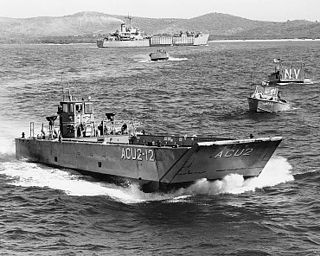
The LCM-8 is a river boat and mechanized landing craft used by the United States Navy and Army during the Vietnam War and subsequent operations. They are currently used by governments and private organizations throughout the world. The acronym stands for "Landing Craft Mechanized, Mark 8".

The Royal Army Service Corps (RASC) was a corps of the British Army responsible for land, coastal and lake transport, air despatch, barracks administration, the Army Fire Service, staffing headquarters' units, supply of food, water, fuel and domestic materials such as clothing, furniture and stationery and the supply of technical and military equipment. In 1965 its functions were divided between other Corps and the RASC ceased to exist; subsequently, in 1993, they in their turn became the "Forming Corps" of the Royal Logistic Corps.

Formed on 9 December 1996, the Royal New Zealand Army Logistic Regiment (RNZALR), "the Duke of York's Own", is the New Zealand Army's main military Logistics and combat service support (CSS) element. It is the largest regiment in the NZ Army.

The Transportation Corps was established 31 July 1942 by Executive Order 9082. The Transportation Corps is a combat service support branch of the U.S. Army, and was headquartered at Fort Eustis, Virginia, but moved to Fort Lee, Virginia in 2010. It is also one of three U.S. Army logistics branches, the others being the Quartermaster Corps and the Ordnance Corps. The Transportation Corps is responsible for the movement of personnel and material by truck, rail, air, and sea. Its motto is "Spearhead of Logistics," and it is currently the third smallest branch of the Army.

The Port of New York and New Jersey is the port district of the New York-Newark metropolitan area, encompassing the region within approximately a 25-mile (40 km) radius of the Statue of Liberty National Monument. It includes the system of navigable waterways in the New York–New Jersey Harbor Estuary, which runs along 650 miles (1,050 km) of shoreline in the vicinity of New York City and northeastern New Jersey, as well as the region's airports and supporting rail and roadway distribution networks. Considered one of the largest natural harbors in the world, the port is by tonnage the third largest in the United States and the busiest on the East Coast.
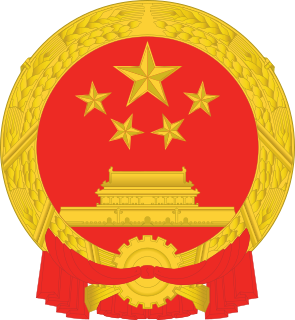
The Ministry of Transport (MOT) of the Government of the People's Republic of China is an agency responsible for railway, road, air and water transportation regulations. Before March 2013, it was not in charge of the conventional railway transportation, which was administrated by the Ministry of Railways. It is a member of the State Council of the People's Republic of China.

The New York Port of Embarkation (NYPOE) was a United States Army command responsible for the movement of troops and supplies from the United States to overseas commands. The command had facilities in New York and New Jersey, roughly covering the extent of today's Port of New York and New Jersey, as well as ports in other cities as sub-ports under its direct command. During World War I, when it was originally known as the Hoboken Port of Embarkation with headquarters in seized Hamburg America Line facilities in Hoboken, New Jersey, the Quartermaster Corps had responsibility. The sub-ports were at Boston, Baltimore, Philadelphia and the Canadian ports of Halifax, Montreal and St. Johns. The World War I port of embarkation was disestablished, seized and requisitioned facilities returned or sold and operations consolidated at the new army terminal in Brooklyn. Between the wars reduced operations continued the core concepts of a port of embarkation and as the home port of Atlantic army ships. With war in Europe the army revived the formal New York Port of Embarkation command with the New York port, the only Atlantic port of embarkation, taking a lead in developing concepts for operations.
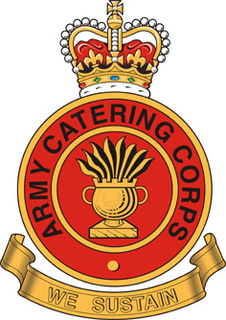
The Army Catering Corps (ACC) was a corps of the British Army, responsible for the feeding of all Army units. It was formed in 1941 and amalgamated into the Royal Logistic Corps in 1993.

The United States Army Transport Service (ATS) operated Army transport ships for both troop transport and cargo service between United States ports and overseas posts. This service is often confused with the Army Transportation Service, created in France in 1917 to manage American Expeditionary Forces transport, renamed Transportation Corps 12 November 1918 still limited to France, becoming a general service under the Quartermaster Corps responsible for land and water transport, then briefly a name applied to a larger organization in the early days of World War II, and becoming the separate Transportation Corps effective 31 July 1942.
The Brooklyn Eastern District Terminal was a shortline railroad and marine terminal with its main facilities and administrative offices located on 86–88 Kent Avenue in the Williamsburg section of Brooklyn, New York City.
A Logistics Officer is a member of the Coast Guard or an Armed Force responsible for overseeing the support of an Army, Air Force, Marine Corps, Navy or Coast Guard fleet, both at home and abroad. Logistics Officers can be stationary on military bases or deployed as an active part of a field army, air wing, naval force or Coast Guard Fleet. The responsibilities of Logistics Officers vary, depending on where they are deployed and what tasks they are assigned. In addition, different countries, have different roles for Logistics Officers. The main role of these officers remains the same regardless of where they are stationed; to ensure that the force is supplied with enough food, water, fuel, ammunition and other goods and services to complete the task at hand.
Military Surface Deployment and Distribution Command (SDDC) is a unique Army command that delivers world-class, origin-to-destination distribution solutions. Whenever and wherever Soldiers, sailors, airmen, Marines and Coast Guardsmen are deployed, SDDC is involved in planning and executing the surface delivery of their equipment and supplies.
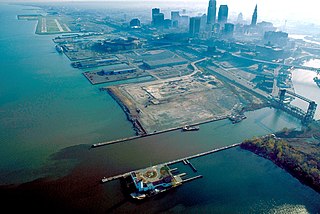
The Port of Cleveland is a bulk freight shipping port at the mouth of the Cuyahoga River on Lake Erie in Cleveland, Ohio, United States. It is the third-largest port in the Great Lakes and the fourth-largest Great Lakes port by annual tonnage.
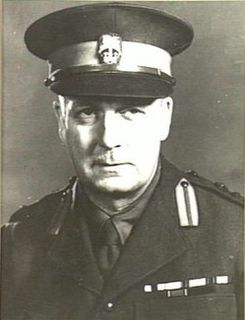
Major General Sir Clive Selwyn Steele, was an engineer and a senior officer of the Australian Army who served in both the First and Second World Wars. He was instrumental in the expansion of the Royal Australian Engineers (RAE) in preparation for the war against Japan.

17 Port and Maritime Regiment is a regiment of the British Army's Royal Logistic Corps. The unit is the Army's only regular Port & Maritime capability, though it is twinned with 165 Port and Maritime Regiment RLC, of the Army Reserve.

Avonmouth railway station was the terminus of the Bristol Port Railway and Pier, a self-contained railway which ran along the River Avon in Bristol, England. The station, which opened in 1865, was adjacent to a pier on the River Severn at Avonmouth. It had two platforms and an adjacent hotel, as well as an engine shed and water tank. The station was closed in 1902 as the land was required for the expansion of Avonmouth Docks, although it remained in use for workers' trains until 1903. The hotel continued in operation until 1926, when it too was demolished to make way for the docks. The station site is now in the middle of Avonmouth Docks.

















